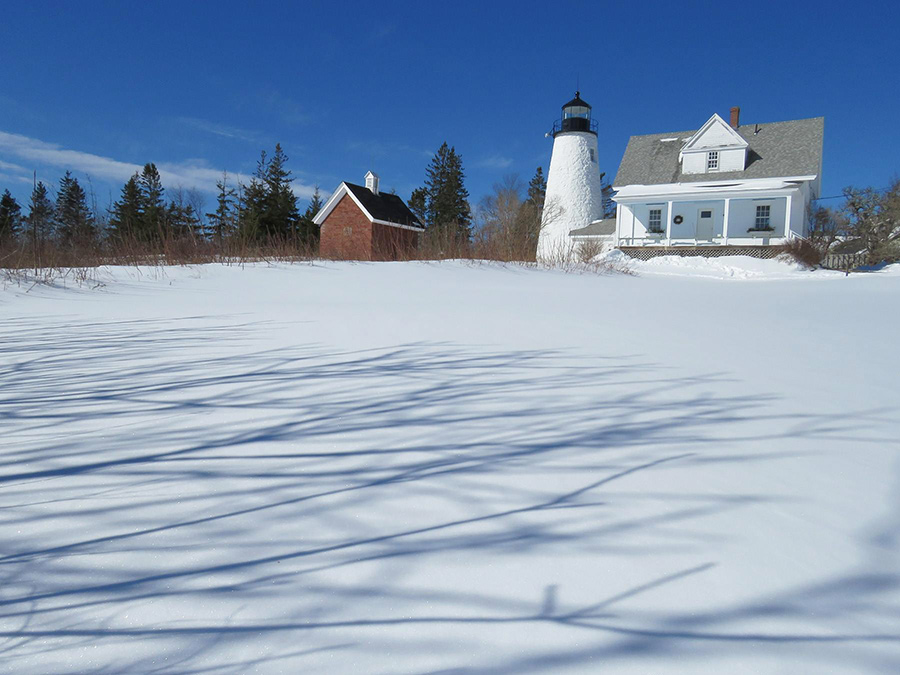Dyce Head Light Presides Over Glimmerings of History
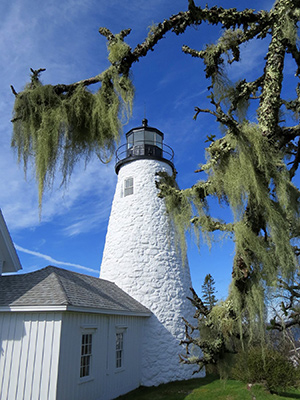
(Bob Trapani, Jr. photo)
Each of Maine’s lighthouses have their own special “personality.” Some reach for lofty heights of awe, others preside stoutly over the incessant surge of the sea, while still others are embraced by the solitude of pure islandness.
In the case of the venerable Dyce Head Light in Castine, what it lacks in stormy intrigue or island wonderment, it more than makes up for with a friendly persona sweetened with age. The sentinel beckons the visitor to linger and listen closely for echoes of grand maritime days gone by.
To be sure, Dyce Head has its own history as a navigational aid, but it would be a disservice to judge the beacon’s importance and appeal on stats and random entries alone.
Maybe more than any other lighthouse in Maine, Dyce Head’s influence transcends its commissioned duty – out of necessity, it would seem. This is partially due to its past being devoid of dramatic accounts of shipwrecks and heroism – and also because the lighthouse was eventually decommissioned in 1937 before being relit again in 2008. But the reasons go even deeper.
How you might ask?
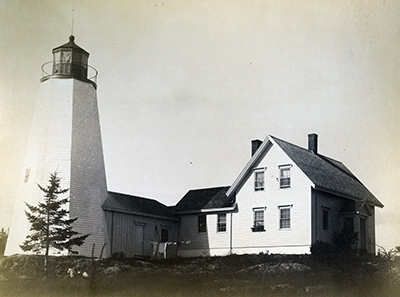
(National Archives photo)
Dyce Head still sends out its guiding light across the bay to aid twenty-first century mariners, but in symbolic fashion, the beacon’s gleams of white also help illuminate Castine’s fascinating past.
The dignified sentinel’s quiet aura, residential surroundings and towering groves of green that embrace it, all seemingly defer to the profound military history and once-thriving port activities of the romantic town it calls home.
In his book, Lighthouses of Maine (1935), author Robert T. Sterling notes, “The town of Castine is not only one of the most beautiful spots on the Maine coast, but few towns have had as exciting a history.”
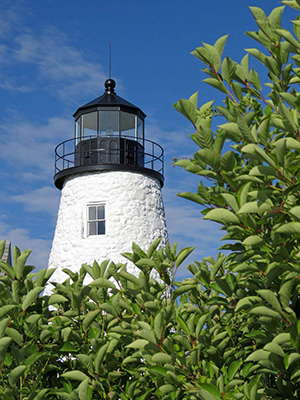
(Bob Trapani, Jr. photo)
Author L. Whitney Elkins wrote in his 1924 volume, The Story of Maine: Coastal Maine, “Other localities in Maine, we believe, were settled permanently before Castine; but in its fullness of history and romance and beauty, Castine stands among the subdivisions of our State with scarcely a peer. Characters who played active and exciting parts in our new-world drama have lived there, and intrigue and intense rivalry have added to the interest of the story.”
Whitney concluded, saying, “To make our statements more replete, we may add that within the last three centuries Castine has been possessed by four different nations, and has changed from one to another nine times.”
And finally, in Down East Latch Strings (1887) by Ernest Ingersoll, the author notes, “Those who have read Noah Brook’s finely illustrated article, An Old Town with a History, in The Century for September, 1882, need no account of this harbor, nor of the picturesque water-front of the antique town. But Castine is by no means super annuated. It has large and living interests in ship-building, deep-sea fisheries and the canning industries, and among its residents are many wealthy men, while more than one distinguished name occurs in its modern annals.”
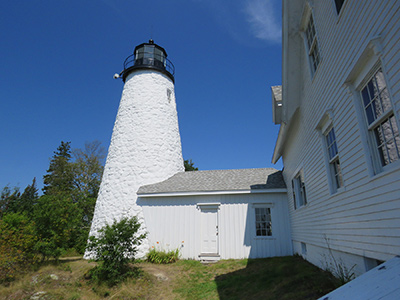
(Bob Trapani, Jr. photo)
Though the lighthouse itself was not a witness to all of the aforementioned drama, its duration through time, warm countenance and benevolent purpose do point to the rich heritage resting in the harbor and along the shores of Castine. Maybe the lighthouse could even be considered overshadowed by such maritime grandeur, but its place in history is quite secure and permanently intertwined within a broader story.
For Dyce Head Light was indeed established for a vital navigational purpose. In a bygone era, the light served a heavy volume of shipping traffic. According to George Augustus Wheeler in his 1875 book, History of Castine, Penobscot and Brooksville, Maine, “The growth of navigation, not only up and down the Penobscot, but also to this place, rendered the establishment of a light-house at the entrance to this harbor, a necessity. Accordingly, in the year 1828, the Dice’s Head Light-House was built on the north side of the entrance to the harbor.”
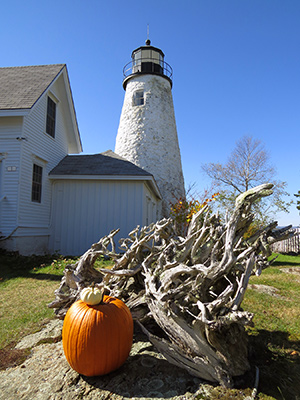
(Bob Trapani, Jr. photo)
Dyce Head Light was also fondly mentioned in Down East Latch Strings. “To the right and eastward, the bluffy and well-wooded extremity of the peninsula of ancient Pentagoet dominates the scene, its light-house marking, like a white finger, the highest point of that section of the shore,” said its author Ernest Ingersoll. “Castine does not look out upon the river, but is some distance back from ‘the point,’ where Dice’s Head light-house sheds its rays upon the intricate channels; and it faces a snug little harbor within the mouth of Bagaduce River.”
Today, the lighthouse is a storyteller of sorts – speaking in a silent but unmistakable language to all who will listen intently. Upon the whispering winds, the beacon pays tribute to its keepers and their families who once resided below its faithful gleams, to the countless thousands of sailors it safely guided through the annals of time – and of course, to the historic town of Castine itself.
In Lighthouses of Maine, Robert T. Sterling said, “But like many seacoast towns it now sleeps quietly beneath its mantle of history.” This may be true, but history can come alive too – if one only takes the time to discover it.
So on your next visit to Dyce Head Light, take a moment to ponder the depth and breadth of maritime heritage it faithfully presides over as it stands sentinel at the harbor’s entrance. For Dyce Head’s duty is not simply to the mariner, but also to all who seek the splendor of Castine yesterday, today and tomorrow!
